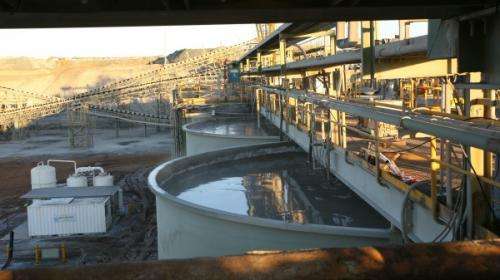"Bioleaching" bugs present viable mining method

Salt and acid-tolerant bacteria with the potential to be used in mining processing have been uncovered in the Wheatbelt.
The bugs were found during a "bio-prospecting" survey near Merredin and are likely to become more important in WA in coming decades as high-grade ore runs out.
CSIRO environmental microbiologist Suzy Rea, who led the research, says the bacteria could one day be used in bioleaching, a process that uses microorganisms to extract metals from ore.
"Bioleaching is already commercially up and running, about 15−18 per cent of the world's copper supply is actually done via bioleaching," she says.
"But one problem we have in two countries that do a lot of mining, Australia and Chile, [is that] fresh water is quite scare and both have salinity issues."
Dr Rea says Australia's groundwater is becoming increasingly saline in some areas and in Chile seawater could be used for bioleaching if bacteria are found that can handle the salt.
"Usually microorganisms can handle one extreme condition but not another and our bugs are already managing acid because all leaching is done, at least for copper sulphide ores, in an acidic environment," she says.
To find the bacteria, the scientists turned to a 10,000km network of salty, acidic drains that were installed on farmland in the Wheatbelt to get the salt off the land.
Farm drains provide ideal residence for bacteria
"Some of these drains have got a really low pH so they were perfect for us to go down and sample," Dr Rea says.
"They had high salt, low pH, if there were any bugs in there growing they would...had to have been able to manage both of those conditions."
The research, published last month in the journal Minerals Engineering, found the acid-loving bacteria is more salt-tolerant than any discovered previously.
The next step is to prove the bugs can not only handle the salt and acid together but also still leach copper at an acceptable rate.
Dr Rea says biomining is generally used for low-grade sulfide ores and gold extraction but researchers are now looking to use microbes for oxide ores like iron.
This is set to become increasingly important in WA in future years as our high quality iron ore depletes.
"It's predicted that our good quality iron ore will run out by 2030-2050," she says.
"Then we're going to have to start looking at alternative ways of mining low grades ores."
Provided by Science Network WA



















